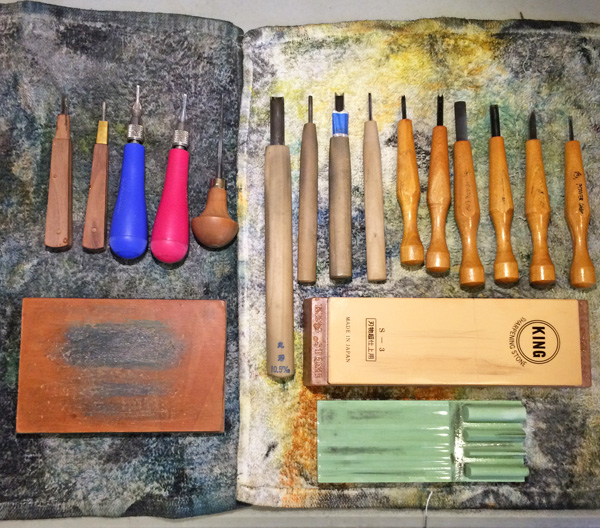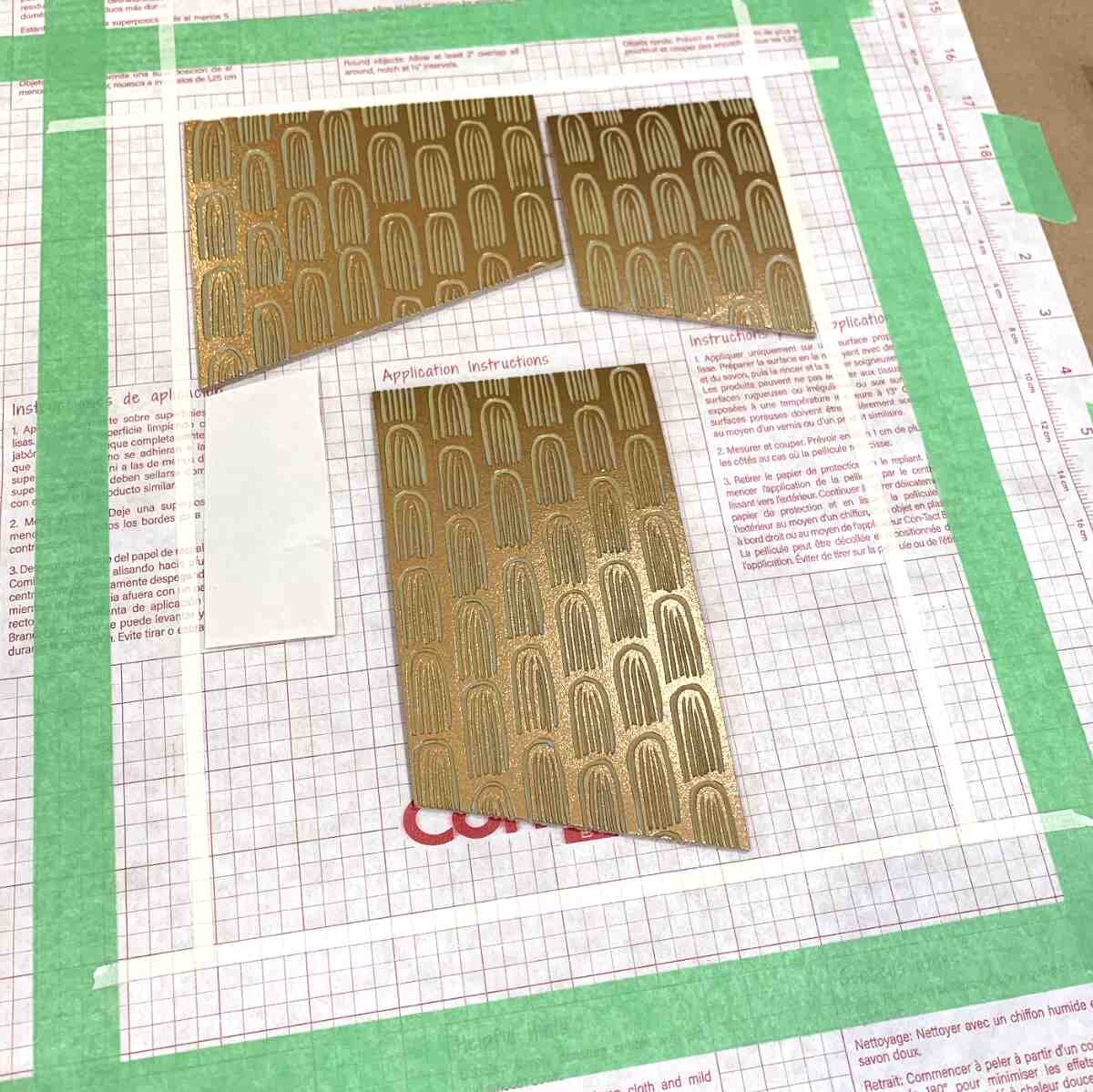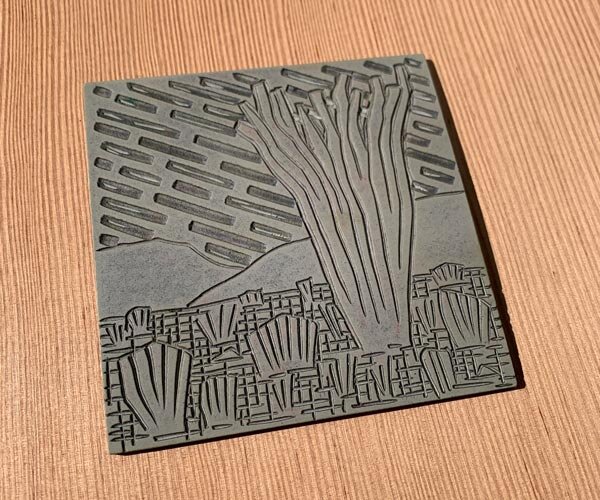This is a new abstract linocut print titled, Borrowed Time. The block print has a graphic feel with circular and triangular geometric shapes contained within a red structure. It’s printed on 16” x 20” white Stonehenge paper.
Part of the process I enjoyed with this particular linocut was coming up with the three colors that would work best - I did tests with different variations. I made the lino print using the jigsaw printmaking technique. In the photo below, you’ll see some of the different carved linoleum blocks I used.

















